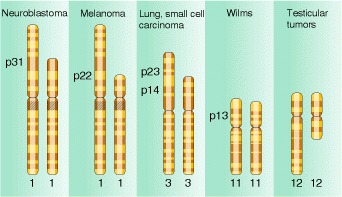Gene deletion, homozygous or heterozygous?
Chromosome mutations often arise in cancer cells, and we shall see several cases in this chapter and the next. As an example, Figure 17-8 shows some deletions consistently found in solid tumors. Not all the cells in a tumor show the deletion indicated, and often a mixture of different chromosome mutations can be found in one tumor. The contribution of such changes to the cancer phenotype is not understood.

Deletions found consistently in several different types of solid tumors in humans. Band numbers indicate recurrent breakpoints. (After Jorge Yunis.)
Homozyous deletions are usually lethal, while heterozygous deletions could be also dangerous.
Deletions can happened on single gene (intragenic) or several genes (multigenic). Some deleted mutations are still viable.
In our case, we should determine the precise location of gene deletion (now proved to be a exon 9 homozygous deletion)
P.S. As to our case, it can be categorized as an exon deletion case. About exon deletion, the most famous related disease is DMD(Duchenne Muscular Dystrophy).[2] The mutations (including exon deletion) happen on the gene called dystrophin gene.[3]
Reference:
[1]Griffiths AJF, Miller JH, Suzuki DT, et al. An Introduction to Genetic Analysis. 7th edition. New York: W. H. Freeman; 2000. Deletions. Available from: https://www.ncbi.nlm.nih.gov/books/NBK21904/
[2]https://www.parentprojectmd.org/about-duchenne/what-is-duchenne/types-of-mutations/
[3]https://en.wikipedia.org/wiki/Dystrophin